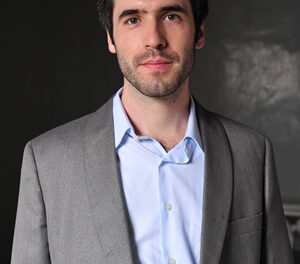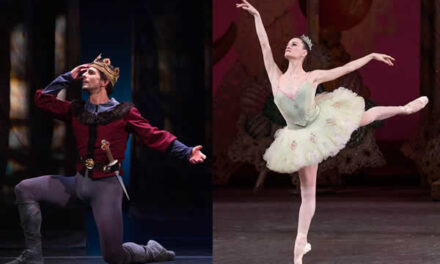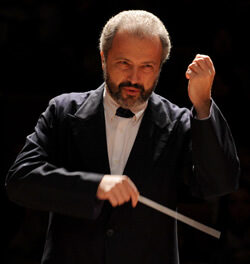Imagine an intimate courtyard in Florence, dotted with ancient statues and backed by lush views of villas rising from warm, sun-dappled hills. Imagine a persistent breeze stirring and warming you, but every now and then tugging at your clothes… This was the scene set in the North Carolina Museum of Art on Wednesday evening, amongst ancient Greek and Roman statues and larger-than-life Italian Renaissance paintings. Theatre Raleigh has relocated to the NCMA for its production of Craig Lucas and Adam Guettel’s The Light in the Piazza, an operatic musical that premiered in 2003. This adaptation of Elizabeth Spencer’s novel details the Tuscan tour of Margaret Johnson, the wife of a Winston-Salem cigarette mogul, and her daughter, Clara, who is thrust into an intense romance with a young Italian man, Fabrizio, by the winds of fate.
The production brings together actors of the mainstage, Broadway, and opera traditions by design, but, despite their eclectic backgrounds, Theatre Raleigh’s cast works notably well together. The increasingly-less-innocent attraction of Clara (Hilary Maiberger) and Fabrizio (Conor Ryan) was palpable from the start, and Maiberger’s theatre voice magically blended with Ryan’s more classically-nuanced tenor. Both actors glowed with talent and charisma, and it would be delightful to hear them sing together all night. Top-billed Broadway star Judy McLane plays Clara’s mother, Margaret, often narrating and giving exposition to keep the audience informed and entertained in the sometimes very abstract action, like the use of Lisette Glodowski’s ethereal dancing to personify the wind that delivers Clara’s hat to Fabrizio. McLane’s strong Broadway belt brought both passion and humor to many moments of the show, although struggled to keep precision in the more atonal moments of the score, such as “Dividing Day” and “Fable.”
Complementing the leading voices are some stellar supporting singers, notably operatic soprano Austenne Grey, who plays Fabrizio’s mother, and Maigan Kennedy, who plays Fabrizio’s jaded sister-in-law, Franca. Kennedy expertly delivered the delicate atonality of her song “The Joy You Feel,” and brought one of the first moments of complex emotional turmoil to the show. Regrettably, Grey has only one shining moment of song, in “Aiutami” in Act II, in which she briefly commandeers the role of narrator from Margaret and then joins in an impassioned sextet, showcasing the full vocal ability of these women as well as the talented men playing alongside them.
Theatre Raleigh’s standard fare is small productions of highly professional actors and singers in an intimate setting, and this was no exception. The thrust-stage style kept the audience close to the action — although it cut off the view of the musicians in the long corridor of art that served as the upstage area — actors were always circulating the entire space, facing all directions evenly by director Eric Woodall’s careful staging. Julie Bradley’s musical direction added to the intimacy of the production. The core group of five instrumentalists balanced their sound throughout the room but often scaled back into a delicious, eerie sound that allowed for huge amounts of foreshadowing as we started to wonder about Clara’s secret. Harpist Vonda Darr added necessary refinement — what could be more fitting for an art museum than a harp? — and delivered iconic moments echoed by the pizzicato strings.
The space was surprisingly live; the acoustics allowed for singers and musicians alike to perform naturally with no amplification. Lighting and scenic designer Thomas Mauney worked with the already impressive lighting of the museum and its visually appealing layout to present a versatile performance space that eloquently depicted gardens, courtyards, streets, hotels, and, not surprisingly, an art museum. At the end of the title song, towards the beginning of Act II, Maiberger seemed to glow from within and without, both because of the staging and lighting but also the exuberant, glorious singing she poured out of her soul, presenting easily the most powerful moment of the evening.
A lesser-known work, The Light in the Piazza is a wealth of emotional and interesting stories and music. The choice to stage it in the art museum inner courtyard, between statues of Hercules and the Madonna with Child in Majesty (both artists unknown), does the writing of the show immense justice. The cast and crew did a fantastic job of bringing the dramatic and rich settings of Italy to life and made this show an evening not to be missed!
The Light in the Piazza continues through Thursday, July 14. Several performances are already sold out, so get your tickets quickly. For more details on this production, please view the sidebar.













